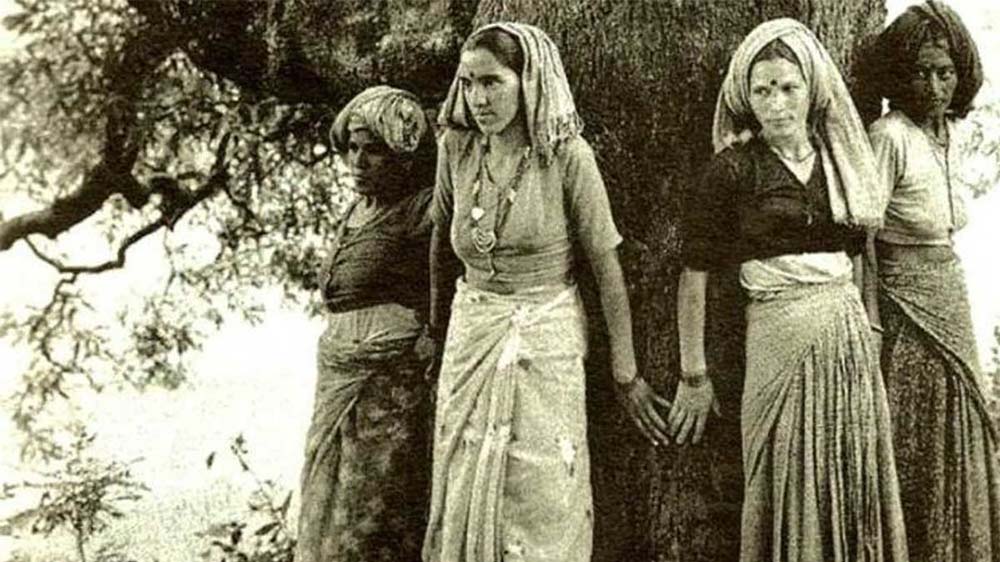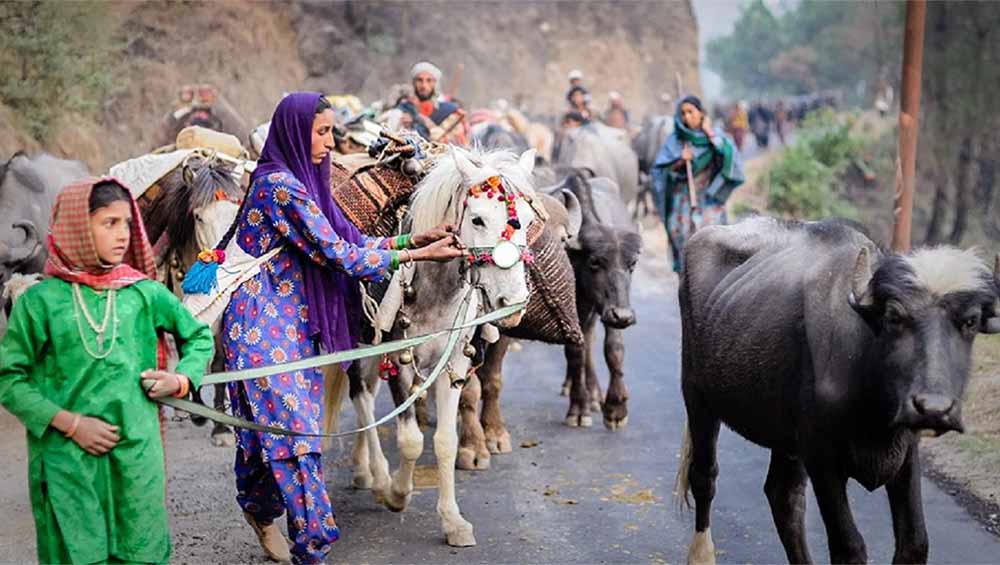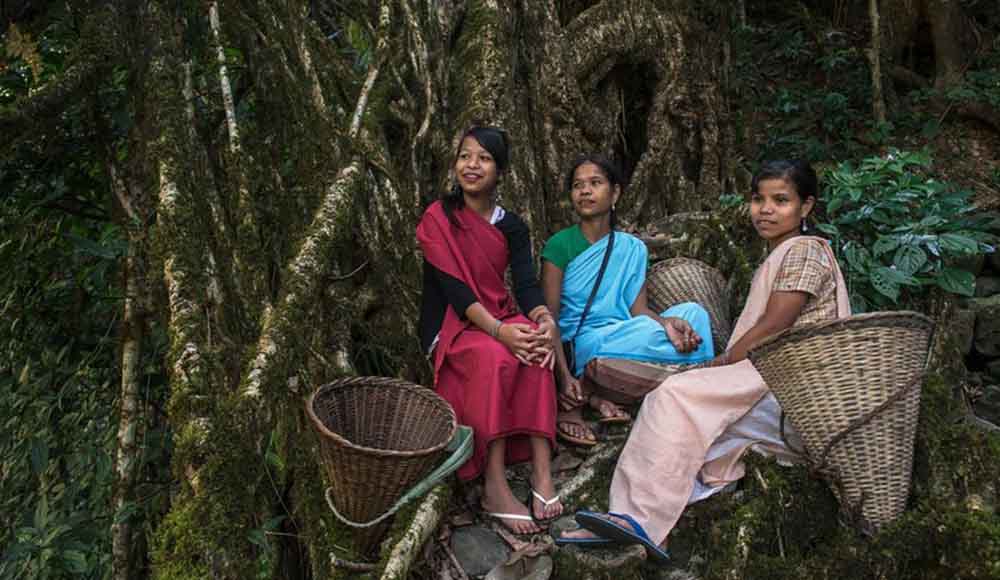India has seen the highest rise in deforestation in the last 30 years, with a massive surge recorded between 2015 and 2020. During these years, the country was ranked second only after Brazil, according to a recent report by Utility Bidder, a United Kingdom-based comparison site for energy and utility costs. The world has lost one-third of its forest – an area twice the size of the United States. Every year, the world loses its forests in the form of development. In India, experts blame pressures due to expanding human settlements, the study stated “As the country with the second largest population in the world, India has had to compensate for the increase in residents – this has come at a cost in the way of deforestation.” Much of that deforestation happens on Indigenous lands, often without their knowledge or consent.
Nature inspires our culture, our traditions, our science and our identity. She produces the food we eat, the water we drink, the medicine we need, and the grass we use to feed livestock. Native communities are on the frontline of forest conservation – preserving the balance of the ecosystem has always been a priority for indigenous settlements. They are critical guardians of our biodiversity and these communities are demanding change and fighting to protect the forests of India by demonstrating effective conservation, patrolling forests, and at times, even opposing government policies and developers with the aim of safeguarding fast-disappearing forests.
Bishnois

The Bishnoi community are India’s OG eco-warriors. Spread mostly in hamlets across the state of Rajasthan, they have been fighting to protect the environment for more than 500 years. The community believes in the sanctity of all life, shunning meat and avoiding felling living trees. Members draw inspiration from Amrita Devi, a Bishnoi woman who was killed in 1730 while trying to protect a grove of khejari trees. Amrita Devi and her three daughters hugged the trees to save them, and in response, paid with their heads being severed — was followed by others of the community, leading to the massacre of 363 people.
Bishnois are actively involved in keeping watch over the poaching of wild animals and rescuing injured animals and often are a big support to the forest department. Advocate Rampal Bhawad co-founded the Bishnoi Tiger Force, an environmental campaign group and anti-poaching organisation. Going to court and using laws that are in place to fight for wildlife and the environment has become common for the Bishnoi community. They also played an active role in the setting up of rescue centres for injured animals in villages in western Rajasthan and had even donated a vehicle to Jodhpur’s Machia Biological Park Rescue and Rehabilitation Centre to bring in rescued animals swiftly
Although a subsect of Hinduism, the Bishnoi do not cremate their dead because that would mean cutting down trees to fuel the fire.
Van Gujjars

The Van Gujjars are a semi-nomadic pastoral community, that continues to practice seasonal migration across forests in Uttarakhand, Uttar Pradesh and Himachal Pradesh in pursuit of their pastoral livelihood. The phenomena of transhumance pursued by the community are among the few climate-adaptive and resilience strategies that ensure their pastoral livelihood remains viable and sustainable
However, the community has been villainised by the forest departments of these states for their nomadism. Throughout the last decade, numerous attempts have been made by the forest department to restrict entry for the Van Gujjars on the pretext of their pastures being declared as protected areas or on the ground of encroachment. Van Gujjars’ activities such as the lopping of leaves enable the sustenance of herbivores. It also fosters healthier growth and density of the lopped trees. The rotational grazing of the Van Gujjars and their buffaloes also help maintain water sources through embankments, removal of invasive species, facilitation in seed dispersal, remanuring the grazing areas and paths and creating fire lines within forests to protect the ecosystem for other species too.
Khasis

Khasi communities of Meghalaya possess indigenous forest conservation values and management systems reflected in an unbroken 500-year-old tradition of protecting their sacred forests and ancient stone megaliths. Indigenous institutions including multi-village governments (hima) and tribal village councils remain the active governance organisations for civil society at the local level. These institutions set and enforce traditional social norms and rules through participatory meetings and group activities that characterize Khasi society.
Khasis are among those communities that have a legacy of nature conservation. Khasi customary laws and practices allow for the conservation of forests in the form of sacred groves. As reflected in their oral history, Khasi communities place high cultural value on their forests, and many people are concerned about forest loss. Rituals continue to be performed in sacred places within and around the forest, while rules for forest conservation and use are generally well-respected by the community. The Khasi also value their forests for their capacity to protect springs and stream beds and conserve wildlife. Equally important, the forests provide a diversity of food products including mushrooms, green leaves, fruits, and nuts that contribute to the family kitchen. Bamboo and timber for construction and tools are drawn from community forests. A recent survey of four Khasi Hills villages found that community members collected non-timber forest products from 137 different plant species found in the surrounding forests [10]. This high social and economic dependency upon the forests has energized the Khasi response to forest loss.
Idu Mishmis

The Idu Mishmi is a sub-tribe of the larger Mishmi group (the other two Mishmi groups are Digaru and Miju) in Arunachal Pradesh and neighbouring Tibet. They believe that tigers are their elder brothers. Killing tigers is, for the Idu Mishmi, a taboo. Known for their weaving and craftsmanship skills, the Idu Mishmis primarily live in Mishmi Hills, bordering Tibet. Their language, the Idu Mishmi language, is recognised as endangered by UNESCO. The Idu Mishmis have a strong connection with the rich flora and fauna of the region, and their animist beliefs have led them to develop unique wildlife conservation practices.
The community has already declared part of its forest land as a "Community Conserved Area" governed by locals.
Apatanis

Ziro Valley presents an example of how the co-existence of man and nature has been perfected over centuries by the Apatani civilization. The valley, inhabited by the Apatani tribe, lies tucked in the lower ranges of the eastern Himalayas in the state of Arunachal Pradesh. The Apatanis, one of the major ethnic groups of the eastern Himalayas, have a distinct civilization with systematic land use practices and rich traditional ecological knowledge of natural resources management and conservation, acquired over the centuries through informal experimentation.
The community has evolved a unique skill of rice-fish cultivation where along with paddy, fish is also reared on the fields. This is further supplemented with millet (Eleusine coracana) reared on elevated partition bunds between the rice plots. The agroecosystems are nourished by nutrient wash-out from the surrounding hill slopes. Nutrient loss with crop harvest is replaced by recycling crop residues and the use of organic wastes from the villages so that soil fertility is sustained year after year.